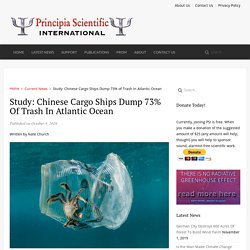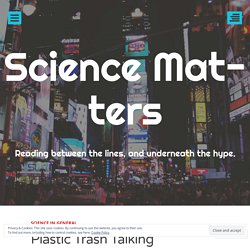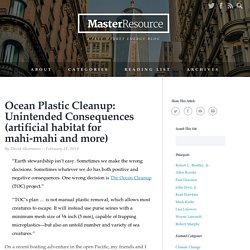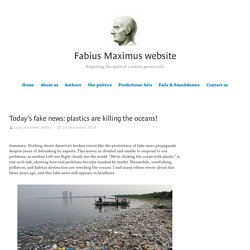

Computational Hubris – Watts Up With That? Guest Essay by Kip Hansen – 25 October 2020 What is pictured in this little image?

And what can it possibly mean? These are very good questions and should be asked whenever the lede of a science news story is based on an image. Why? “A picture is worth a thousand words” – – – or so they say. Now, a picture of a new species, say a confirmed photograph of Bigfoot or the Loch Ness monster, might be appropriate for the news. The example I am using for today’s essay is related to my recent essay titled: Where Do the Plastic Bottles Go?. After Where Do the Plastic Bottles Go? “Microbial carrying capacity and carbon biomass of plastic marine debris” by Shiye Zhao, Erik R. “Trillions of plastic debris fragments are afloat at sea, creating the “perfect storm” for microbial colonization. What does that mean when we get up in he morning? As I note below the image, I have adjusted the contrast and color levels to enhance this image – the original is rather dark.
Simulated sunlight reveals how 98% of plastics at sea go missing each year. Trillions of plastic fragments are afloat at sea, which cause large "garbage patches" to form in rotating ocean currents called subtropical gyres.

As a result, impacts on ocean life are increasing and affecting organisms from large mammals to bacteria at the base of the ocean food web. Despite this immense accumulation of plastics at sea, it only accounts for 1 to 2 percent of plastic debris inputs to the ocean. The fate of this missing plastic and its impact on marine life remains largely unknown. It appears that sunlight-driven photoreactions could be an important sink of buoyant plastics at sea. Sunlight also may have a role in reducing plastics to sizes below those captured by oceanic studies. A team of scientists from Florida Atlantic University's Harbor Branch Oceanographic Institute, East China Normal University and Northeastern University conducted a unique study to help elucidate the mystery of missing plastic fragments at sea.
Study: Chinese Cargo Ships Dump 73% of Trash in Atlantic Ocean. Published on October 4, 2019 Written by Nate Church International researchers estimate that as much as 73 percent of the garbage in the Atlantic Ocean originates from Chinese merchant vessels, Canada’s National Post reported on Tuesday.

Researchers from Canada and South Africa studied waste washed up on the beaches of Inaccessible Island, an island in the heart of the southern Atlantic Ocean, on a series of trips that began in 1984. Nearly three-quarters of the trash they sifted through originated in Asia, produced by China. The research challenges long assumptions that plastic debris at sea primarily originates on land. “When we were [on the island] last year, it was really shocking how much drink bottles had just come to dominate,” lead author Peter Ryan told the BBC. “What was really shocking was how the origin had shifted from largely South American, which is what you would expect from somewhere like Inaccessible Island, because it’s downwind from South America, to predominantly Asian.”
Plastics: Science is Winning. Guest Essay by Kip Hansen — 18 October 2019 Science is beginning to win in the long battle over misinformed anti-plastic advocacy.

It has been a long time coming. The most recent paper on the subject of pelagic plastic (plastic floating in the oceans) is from a scientific team at the Woods Hole Oceanographic Institution on Cape Cod, Mass., and the Massachusetts Institute of Technology. The study is “Sunlight Converts Polystyrene to Carbon Dioxide and Dissolved Organic Carbon” by Collin P. Ward, Cassia J. Plastic Trash Talking. Following a viral video of a turtle with a straw in his nose, plastics suddenly went from the “greatest thing since sliced bread” to environmental villain.

This post first summarizes the waste plastic problem discussed in a recent GWPF paper. As in other cases of environmental issues, plastic trash talking conflates several problems, including littering, waste recycling and plastics disposal. Ocean Plastic Cleanup: Unintended Consequences (artificial habitat for mahi-mahi and more) “Earth stewardship isn’t easy.

Sometimes we make the wrong decisions. Sometimes whatever we do has both positive and negative consequences. One wrong decision is The Ocean Cleanup (TOC) project.” “TOC’s plan … is not manual plastic removal, which allows most creatures to escape. Magical Plastic. News Brief by Kip Hansen Plastics are as much in the news as climate change, and hold the same honored place as a universal scapegoat — an item so odious that all are welcome to blame it for a host of ills environmental and social, real or imagined.

EU Waste-Dumping Behind The Marine Plastic Crisis - The Global Warming Policy Forum (GWPF)The Global Warming Policy Forum. Today’s fake news: plastics are killing the oceans! Summary: Nothing shows America’s broken vision like the persistence of fake news propaganda despite years of debunking by experts.

This leaves us divided and unable to respond to our problems, as neither Left nor Right clearly see the world. Compostables Were Meant To Save Us From Plastics. They’re Overflowing Landfills. Report: Recycling Plastic Is Making Ocean Litter Worse.